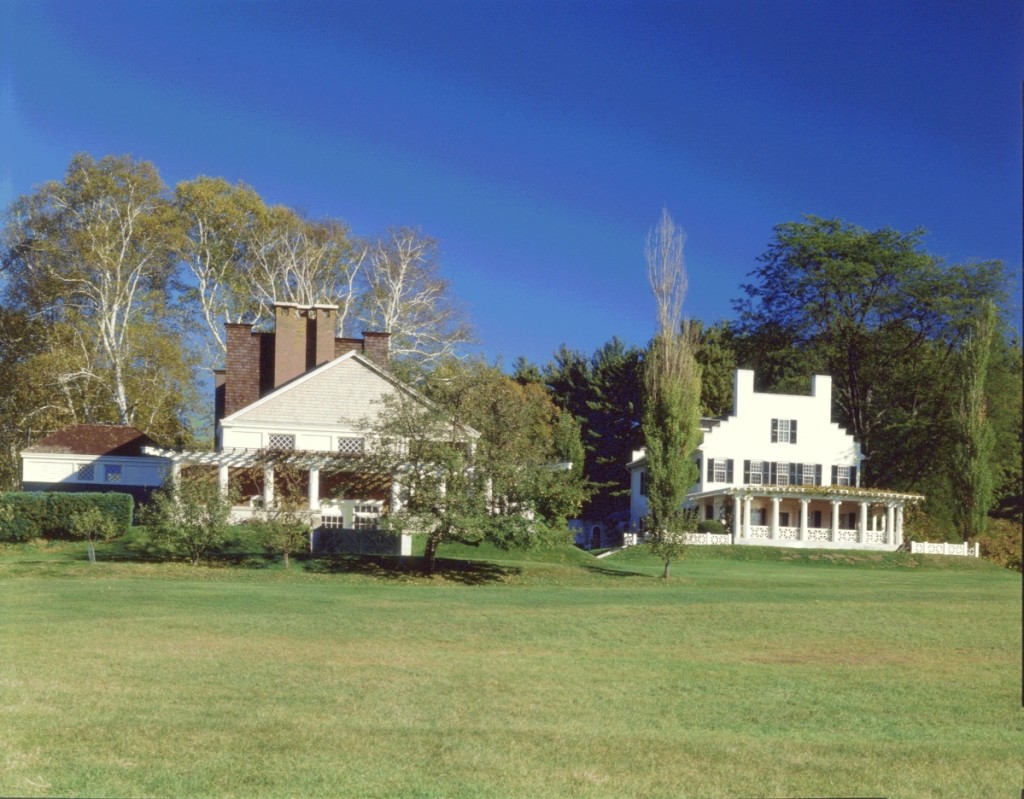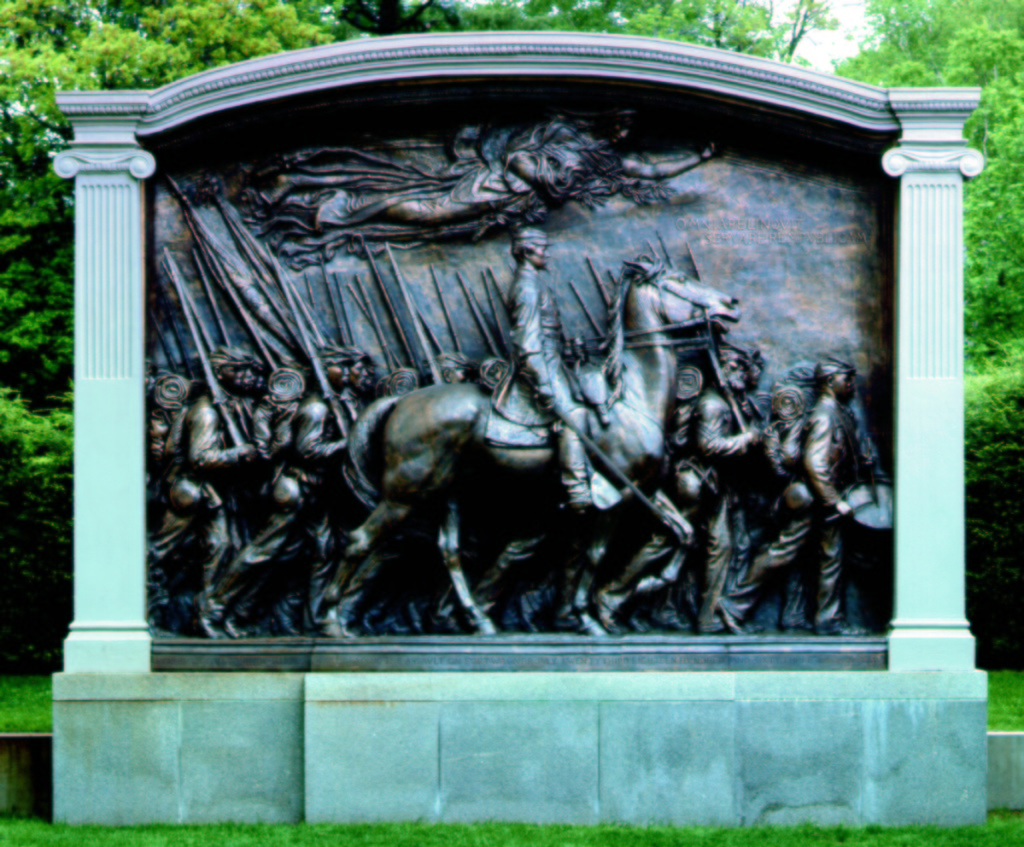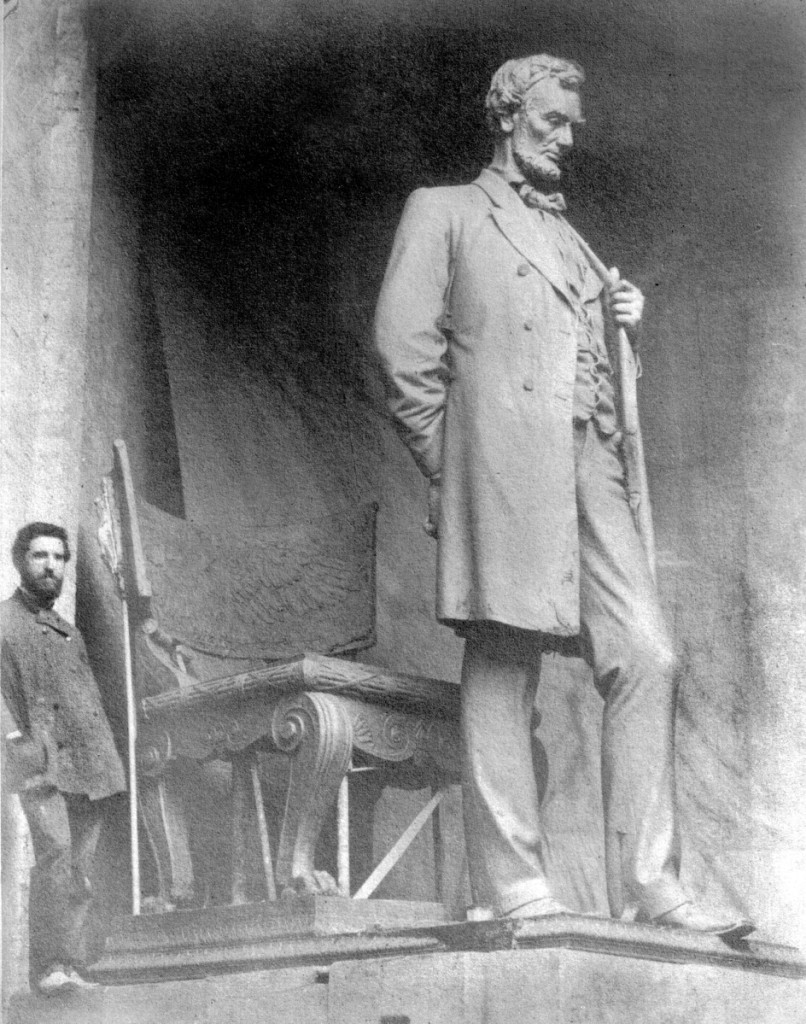
Little Studio and Aspet, Saint-Gaudens National Historical Park. Image courtesy of the US Department of the Interior, National Park Service, Saint-Gaudens National Historical Park.
CORNISH, N.H. – Augustus Saint-Gaudens (1848-1907) was one of the major sculptors at the turn of the Twentieth Century. His renown as an artist, as well as a teacher at the Art Students League and an organizer of the National Sculpture Society and the American Academy in Rome, gave him international status.
Saint-Gaudens, although born in Dublin, Ireland, in 1848, always considered himself a New Yorker. His family immigrated to the United States when he was a baby, and he grew up near the old National Academy of Design on Fourth Avenue and 23rd Street. As a young teenager at the beginning of the Civil War, he witnessed Abraham Lincoln on his way to his first inauguration, the Draft Riots, and other major historical events.
As an adult he maintained a house and studio in New York until the late 1890s, when he moved permanently to his summer residence, “Aspet,” in Cornish, N.H., where he had spent summers since 1885. Among the sculptures he produced for New York City were early decorative pieces for the Cornelius Vanderbilt II House on Fifth Avenue and the Henry Villard House (now the Palace Hotel) on Madison Avenue, the Peter Cooper Monument at Cooper Triangle and the Sherman Monument in Grand Army Plaza at the foot of Central Park.
Saint-Gaudens began his career in art at the age of 13, when he was apprenticed to a cameo cutter. In 1867 he left to study at the Ãcole des Beaux-Arts in Paris. In 1870, Saint-Gaudens went to Rome, where he sculpted his first large work, “Hiawatha,” now in the collection of the Metropolitan Museum of Art in New York City. Returning to America in 1875, Saint-Gaudens was commissioned to sculpt “Admiral David Farragut” (1877-80) in New York City’s Madison Square Park, its architectural setting designed in collaboration with Stanford White.
What followed was a pantheon of iconic American images commemorating the heroes and martyrs of the Civil War, including the “Standing Lincoln” in Chicago (1884-87), the intensely moving and powerful “Robert Gould Shaw Memorial” (1884-97) in Boston, and “William Tecumseh Sherman” (1892-1903). Other important works are “The Puritan” (1883-86) and 1907 US gold $20 and $10 coins.

Augustus Saint-Gaudens, “Monument to Robert Gould Shaw and the 54th Massachusetts Regiment,”1884–97; cast 1997. Saint-Gaudens National Historical Park. Image courtesy of the US Department of the Interior, National Park Service, Saint-Gaudens National Historical Park.
Though best-known for his monuments, the artist also made more than 100 portraits in low relief, as well as decorative work, coins and medals and even some silver and glass designs for Tiffany & Co.
The Saint-Gaudens Memorial is a nonprofit organization incorporated in 1919 to “maintain a permanent memorial to the late Augustus Saint-Gaudens on the site of his homestead estate in Cornish, New Hampshire.” In 1964, the Memorial gave that property and artworks to the federal government, which became known as the Saint-Gaudens National Historic Site, New Hampshire’s only unit of the National Park System. The Saint-Gaudens Memorial continues as a nonprofit partner and advocate that oversees concerts, a fellowship program and contemporary art exhibitions.
On March 12, 2019, with the passage of S.47, the John D. Dingell Jr Conservation, Management and Recreation Act (formerly known as the Natural Resources Management Act), Congress re-designated the site as Saint-Gaudens National Historical Park (SGNHP).
“We are pleased to mark this next step in the evolution of the National Park in Cornish,” said Rick Kendall, superintendent of the park. “This change in designation is a recognition of how far the park has come in the 50 years since it was established.”
Thayer Tolles, president of the Saint-Gaudens Memorial, commented, “This redesignation is both fitting and significant for a historic property with a broad mission to enhance enjoyment of the arts and the natural surroundings for its visitors.”

Augustus Saint-Gaudens in his Cornish studio with the completed clay model of the “Standing Lincoln,” 1887, Saint-Gaudens National Historical Park. Image courtesy of the US Department of the Interior, National Park Service, Saint-Gaudens National Historical Park.
National Historic Sites are generally small in size, consisting of only one or a few buildings or a couple of acres, and generally tell a discrete story of an individual or event. National Historical Parks are larger in size, ranging from dozens or hundreds of acres, tell a more expansive story of multiple people or historical eras and may also be composed of non-contiguous units. The addition of the Blow-Me-Down Farm to the Saint-Gaudens site in 2010 expanded not only the park’s acreage but its story, going beyond Saint-Gaudens and his artwork to include the many artists, intellectuals and public servants who flocked to Cornish to become part of the Cornish Colony of artists around the turn of the Twentieth Century.
Functionally, the new designation does not change the way the park is operated, funded or enjoyed by the public. The suite of rules and regulations governing the management of national parks will continue to be applied to the redesignated National Historical Park in Cornish. Events, programs and practices traditional to the site and consistent with the park’s established principle to serve as a “living memorial” to Augustus Saint-Gaudens will continue as they have in the past.
Today the National Park Service operates the estate and attracts approximately 40,000 visitors annually. The Memorial continues as an active park partner, sponsoring programs at SGNHP and supporting its mission by promoting Saint-Gaudens’s legacy as well as its artistic, architectural and natural resources.
In the centennial year of its founding, the Memorial presented the Saint-Gaudens Medal to the Dartmouth College Library in recognition of its exemplary care and preservation of the papers of Saint-Gaudens and those of other Cornish Colony artists, as well as the records of the Memorial. The medal was established in 1988 for those who, by their talents and vision, have made a significant contribution to the arts in America in the high tradition of Saint-Gaudens. The presentation took place on Friday, June 21, at Rauner Special Collections Library at Dartmouth College.
Earlier in the summer, in the park’s Little Studio, the Memorial held a ceremony to transfer its gift of Saint-Gaudens’s bronze high-relief portrait of Louise Miller Howland (1888) to SGNHP, a tangible physical expression of commitment to this partnership. This bronze comes from descendants of the original owner and joins the largest and most significant holdings of work by Saint-Gaudens anywhere.
-1024x843.jpg)
Robert W. White, Saint-Gaudens Medal, 1992. Silver, 3¾ by 4½ inches, Courtesy of Saint-Gaudens Memorial.
The Memorial’s popular series of Sunday afternoon concerts continues through August 25. The program is creative and diverse, featuring classical and chamber music, blues and funk, jazz, ethnic and fusion, and the American Songbook. Highlights focus on music from important moments in the Memorial’s 100-year history. Concerts start at 2 pm and are free with park admission. Visitors are welcome to picnic on the grounds.
Exhibitions will be held in the park’s newly refurbished Picture Gallery. “Augusta Saint-Gaudens: Stepping Out of the Shadows,” which continues to September 2, focuses on the life and work of the sculptor’s wife, who was an artist in her own right as well as a canny business manager. She, along with her son Homer, was responsible for ensuring the lasting legacy of Saint-Gaudens after his death through memorial exhibitions, authorized castings of his small bronze sculptures, and, not the least, the creation of the Saint-Gaudens Memorial. The exhibition is accompanied by a publication by Dr Henry J. Duffy, curator and chief of cultural resources at SGNHP, and art historian Kathryn Greenthal.
“On View in Cornish: American Art at the Picture Gallery (1948-2019)” is a retrospective of artworks shown in the Picture Gallery over the course of the Memorial’s 71-year-old exhibitions program. It will be on view September 14-October 31 and includes works on paper, paintings and sculpture by artists exhibited throughout this period, such as Paul Sample, Marguerite Zorach, Eric Aho and Ben Frank Moss. The show is curated by Melissa Geisler Trafton, the Memorial’s exhibitions coordinator and adjunct professor of art history at the University of New Hampshire, Manchester.
The reception and curator’s talk take place on Saturday, September 28, at 4:30 pm. This exhibition is accompanied by a publication by Dr Trafton. The Memorial and the park partner on public programs throughout the season, including sculpture workshops; Sculptural Visions 2019, a day of artists’ demonstrations on September 28; and STEAM Camp (science, technology, engineering, arts and math) for youth.
Saint-Gaudens National Historical Park is at 139 St Gaudens Road. The park’s museum buildings are open daily from 9 am to 4:30 pm from Memorial Day weekend through the end of October. The park’s grounds are open from dawn to dusk throughout the year. For additional information, 603-675-2175 or www.nps.gov/saga. For information on the Saint-Gaudens Memorial, visit www.sgnhs.org.




